
About Golf
Golf is a sport played in lush green fields within the lap of nature’s beauty. Played in especially curetted golf course that comprise of plants, trees, bushes, green and natural hazards. The difference of golf and other sports is that golf course does not have any boundary limitation and consists of terrain entirely different from other courses.
Golf courses hosting major competitions comprise 18 holes. During the competition, a player plays through all the 18 holes by progressing from one hole to another in a predefined order. Golf is a safe game, and the chances of injuries are minimal.
The distance from the teeing ground and putting green varies from one hole to another. They have natural or artificial barriers like sand, water, slope, bushes, trees, twigs that can hinder the putting of a ball. This game is dependent on the individual skill of the player. Enormous practise is required in this sport to hit the ball over different hazards towards the putt in a limited number of strokes.
International Golf Federation (IGF) founded in 1958 and is the international federation recognised by the International Olympic Committee (IOC) as the world governing body for golf. Unlike other sport governing bodies, the rules of golf are not responsible for developing, maintaining or administering the rules of golf. The golf rules or any change to it is maintained by United States Golf Association (USGA).
Golf Olympic 2020 logo : ![]()
History
Golf has a long-standing history behind it Persians used to play a game similar to golf. Modern golf came into existence around the 15th century in Scotland. The game became very popular among the elite of society.
Golf was introduced as a sport in Olympics in Paris Olympics in 1900. Later golf was removed after Olympics in 1904. It was included in Olympics back again in the Rio Olympics of 2016.
Objective
The objective of this sport is to hit the ball from the starting point of a hole often called the teeing point such that the ball is putt in a small hole located at a distance in minimal strokes. Every hole has different distance from the starting point and their respective hazards.
The player completing all the 18 holes of the golf course with minimal strokes for each hole wins the event. The number of strokes for completing the first 9 holes is added, followed by the scores of the remaining 9 holes. The player with the minimum number of strokes wins the competition.
Men and women participate in their separate events; the par of a golf hole may differ for men and women. The golf clubs used by women are lighter and shorter than those used by men. The other golfing rules are similar for both men and women.
How The Sport Is Played
Golf typically consists of 18 holes. Each round of golf involves playing a fixed set of holes in a given order in the golf course. Each hole is played only once by the player.
Each hole has a starting area commonly known as the teeing area. The player starts the hole by placing the ball on a tee peg, though it is not mandatory. The player can start the hole by placing the ball in the ground as well.
Tee peg elevates the ball a couple of centimetres from the ground allowing the player to take a proper swing at the ball. Tee peg reduces the interference of ground grass and minimises the hindrance of the swinging club. Tee peg can only be used at the starting hit from the teeing area.
Different clubs are used for different kinds of strokes. The ball should be hit with exact power that takes it near to the putt or directly into it. The ball may easily land into barriers requiring more strokes to putt it.
The putt is a hole of 11 cm in diameter that the player requires to place the ball using minimal strokes. Each player must continue to play the ball until it is holed.
The holes in the golf course can be distant apart from each other. Walking these distances can take a long time, so players use electric carts for travelling through the golf course.
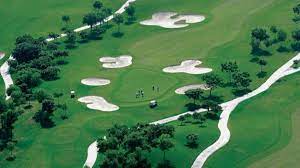
Players carry different golf clubs and other equipment in a golf bag. A maximum of 14 clubs is allowed in a player’s bag at one time during a stipulated round. The bag is carried by caddies who often assist the player in selecting the right club for their shots.
In a field of 100-120 players in a golf tournament, the players are grouped into three with time allocated to the player group. After the second round, only the top 50 players proceed to play the next round. The player having the highest score starts first, and the player with the lowest score, who is also the leader starts last.
In the end, if the scores are tied, a playoff in the way of sudden death format as many holes it takes to decide the winner.
Terms Associated
The terms associated with Golf.
Par: Par provides the count of the number of strokes a player need to complete the hole. Par is determined by the hazards for the hole, and the distance of the putt from the teeing area. An eighteen holes golf course typically involves 72 par.
Par is a method of increasing the competitiveness of the golfer and can also be used to calculate the score. A player can ascertain their performance by gauging the number of strokes they took to complete a hole with the expected par for the hole. The scores on the scoreboard are written based on the par value.
Bogey: A player completing a hole in several strokes that exceeds the par score by a stroke is called a bogey. Likewise, the player completing holes with two more strokes than the par or three more strokes than the par is called double and triple bogies. They are provided, as positive scores.
Birdie: When a player completes the hole in a stroke less than that of the par is called a birdie. Likewise, a player completing the hole in two strokes less than that of the par is called an eagle. They are provided as negative scores. In golf, the player achieving a negative score is better than that of a positive score.
Putting Green: The smallest grass in the golf course that surrounds the putt. The putt can be located at the beginning of the green indicated by a red flag, or in the middle of the green indicated by a yellow or white flag or at the extreme back of the green indicated by a blue flag. With the colour of the flag, the player identifies the location of the putt in the green from a distance.
Fairway: The region between the teeing area and the putting green is called a fairway. The grass can be thinner or thicker depending upon the golf course. The fairway can also have hazards or bushes surrounding it.
Hazards: The hazards are artificial or natural obstacles that make the golf course more challenging. Hazards like water bodies, sandpits, bunkers, trees and bushes act as a hindrance to the players. The player needs to hit the ball avoiding hitting the ball to such hindrances.
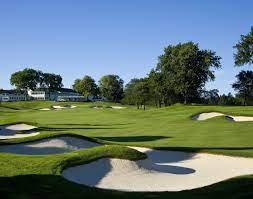
Cart: The electric cart used for travelling through the golf course. The course can be big enough and travelling through the entire course, on foot may take time. For protecting the environment and the greenery surrounding the golf club, an electric cart is used by the player to go around the golf course.
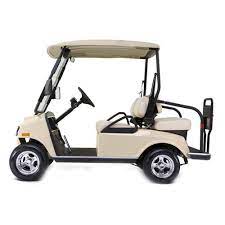
Caddies: They are the person entrusted to carry the golf equipment for the player. They help players selecting the right equipment for the hole and provide tips to the players. Hence they double up as professional advisers. They are the non-playing member associated with the player.

Equipments
In a professional golf tournament, each player is allowed to carry 14 golf clubs. Each golf club is used for a different purpose.
Putter: This golf club is used for putting the golf ball into the putt when the ball is in the green or fringe area of the putt.
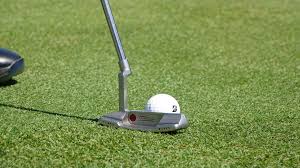
Wedges: When a player wants to play the ball over any hazard, they use the wedge club. The wedges have different degrees of bent at the face of the club. The less the bend, the higher the ball goes. The stress is to loft the ball higher, while the more the bend on the face of the club the more distance is travelled by the ball instead of attaining height. The most commonly used wedge is the sand wedge, where the player tries to loft the ball that had landed in the sand hazard.
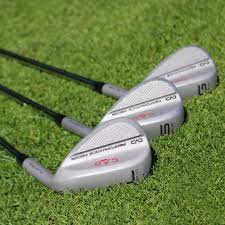
Irons: These clubs vary in height and are marked from 4 to 9. The different iron clubs are used for different strokes. The more the number in the club, the shorter the club is thus the length of the club having number 9 is shorter than that of the club marked as 4. The face of the club also varies, the club having a larger number has smaller bend thus the base of the clubface skywards and helps in lofting the ball that obviously covers less distance. The more the bend at the face of the club the more distance the ball covers. The selection of the iron club depends upon the distance of the ball from the putt. If the distance to the putt is more than the player grabs the iron marked with a lesser number and vice versa.

Driver: The driver club is the ones having a big head and are heavier as compared to the other clubs. They are used to drive the ball from the tee box for the first time and helps in taking the ball the farthest. Different hybrid drivers are available for the player. Depending upon the distance of the putt the player decides to use different drivers.
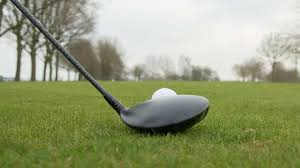
Golf Glove: Golfing glove is an important part of the golf kit. The Player wears only one golf hand and that too in the weak hand. So a right-handed player wears a glove in the left hand and vice versa.

Golf Bag: All the clubs used by the golfer are carried in the golf bag. The golf bag is longer and has straps at the back for easy carriage.

Golf Bag Stand: This is used to stand the golf bag when on the ground.
Marker Coins: Each player in the competition should carry a marker coin that uniquely identifies the player’s ball position for the player. This helps in marking the starting position of the ball for the next shot.
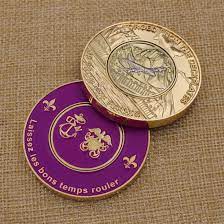
Dressing Code: Each player should be in proper golf clothing depending upon the tournament, and the dressing code must be strictly adhered to.
Golf Hat: This is the choice of the player to wear a golf hat to protect their face from the sun.

Golf Ball: Each player should have their golf balls marked by them for easy identification. So that ball of other players is not touched.

Is The Sport Expensive
Golf is played in golf courses that span about 6 to 8 km and located at prime locations of the city. Maintaining a golf course is expensive, the grass at the golf course has to watered and trimmed regularly along with its cleanliness.
The full-time member of a golf club is expensive and elite members of the society that can afford the membership fees are allowed to play and practise golf. The golf clubs used to hit the golf balls are expensive and professional players need to have different golf clubs for different kinds of strokes.
Hiring a caddy as an advisor and for carriage of golf equipment also adds up to the expenses. The usage of the cart to traverse through the golf course also has its expenses.
Scoring
- A professional golf course has 18 holes and has par 72. This means 72 strokes would be required to complete the 18 holes. Each hole is associated with a par stroke denoting the number of strokes required to complete the hole.
- When a player completes the hole in lesser strokes as mentioned in the par, a negative marking is awarded to the player, like if a hole has par 4 associated with it and a player manages to complete the hole in lesser strokes say three, then -1 is awarded to the player.
- The more the negative score of the player, the better is the chance of winning the tournament. Birdie, Eagle or under Par are the terms associated with the player taking fewer strokes to complete the hole as compared to Par strokes.
- When a player completes the hole in more strokes as mentioned in the Par, a positive marking is awarded to the player, like if a hole has par 4 associated with it and a player completes the hole in more strokes say five, then +1 is awarded to the player.
- The more the positive score of the player, the lesser is the chance of winning the tournament. Bogie, double bogie, triple bogie and over Par are the terms associated with the player taking more strokes to complete the hole compared to Par strokes.
- A player completing the hole at Par means that the score of the player is 0.
- It is important to mention here that the number of strokes for each hole by the player is entered into the scorecard and compared with Par.
- Handicap: Golf is played between players having different levels of experience and skillsets. To make this sport more competitive handicap strokes are added. The handicap score is the average of the best 8 scores from the most recent 20 scores. All the golf players feed the data of their scores, and the handicap score is updated based on that.
- Sometimes players use the handicap system to their advantage by intentionally playing badly to increase their handicap before playing a major tournament. Due to this reason, the handicap system is not used in professional golf tournaments. The participating players in such tournaments are the best of the best hence they have a negative handicap.
- The final score of the player is the total strokes played by the player to complete all the 18 holes minus the handicap score.
- In major tournaments, the fixed numbers of players after 9 holes are allowed to proceed further depending upon the scores of the player and the cutting average that are calculated based on the player performance.
Officials
Golf is played according to the rules of the sport. The player playing golf should be aware of all the rules.
Rules Official: Rules officials are present in the golf course that monitors the game and can be approached, any time when the need arises by the players to seek their help.
Scorers: The players maintain their score on the scorecard but in some tournaments, scorers maintain the scores of all the players and display them on the scoreboard.
Rules Of Sport
- Only amateur players are allowed to participate in the Olympics. Any player who has received payment or played golf for money is not considered an amateur.
- The player has to play the ball as it lies on the ground after the first stroke. They cannot manipulate the surroundings of the ball to create a better shot for themselves. Doing such manipulation would result in a two strokes penalty.
- A player is only allowed to carry 14 golf clubs in their golf kit. A player carrying more than 14 clubs is awarded a two strokes penalty on the first hole.
- The ball of the player that is farthest from the put starts the next shot first.
- No two holes in the golf course are alike, hence different par strokes are associated with the holes based on the difficulty and distance. The player needs to be aware of the holes before the start of the tournament.
- Ball unplayable is the situation when the ball has landed in a bush or water or some other hazard from where making the stroke is not possible. A one-stroke penalty is associated with such a case. The player can drop the ball within two club-lengths of the hazard.
- The lost ball is the situation where the player or the caddie is unable to locate the ball within five minutes of reaching the location. A one-stroke penalty is associated with such a situation and the player has to return to the previous position and retake the shot.
- A two strokes penalty is thrust upon the player who wrongly hits the ball of another player instead of his golfing ball.
- The player has incurred a two strokes penalty when the ball of the player hits another ball of another player lying in the vicinity.
- The player can be disqualified if found cheating or deliberately achieving a lower score and not sticking to the rules of the tournament.
World Rankings
- Mens Amateur Rankings
- Keita Nakajima

- Pierceson Coody

- Ludvig Aberg

- Womens Amateur Rankings
- Rose Zhang

- Rachel Heck

- Linn Grant





 (2 votes, average: 5.00 out of 5)
(2 votes, average: 5.00 out of 5)


